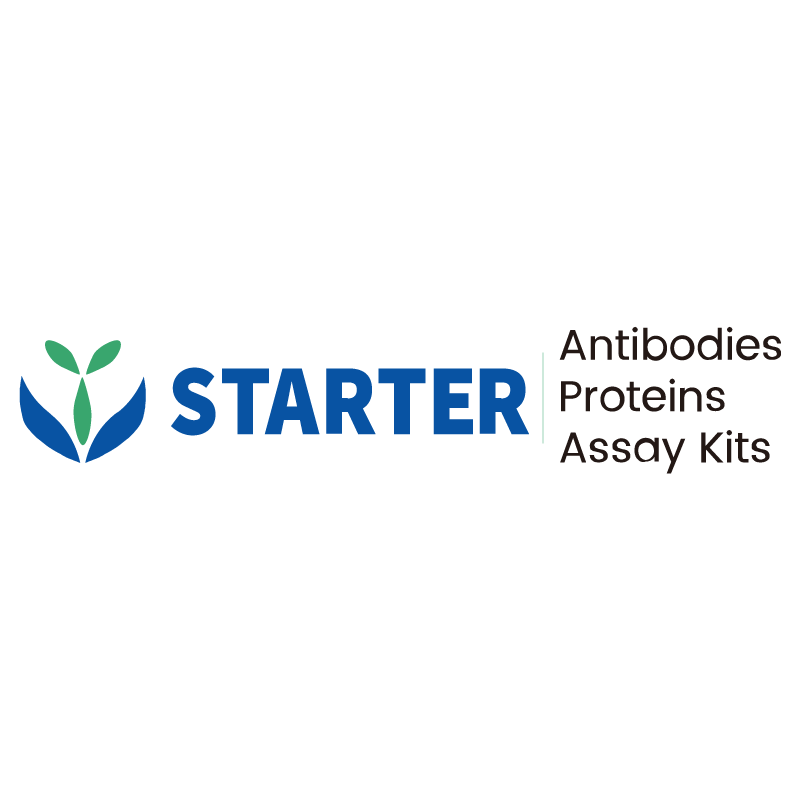WB result of Caspase-7 Recombinant Rabbit mAb
Primary antibody: Caspase-7 Recombinant Rabbit mAb at 1/1000 dilution
Lane 1: RAW264.7 whole cell lysate 20 µg
Lane 2: C2C12 whole cell lysate 20 µg
Lane 3: NIH/3T3 whole cell lysate 20 µg
Lane 4: mouse heart lysate 20 µg
Secondary antibody: Goat Anti-rabbit IgG, (H+L), HRP conjugated at 1/10000 dilution
Predicted MW: 34 kDa
Observed MW: 32, 37 kDa
Product Details
Product Details
Product Specification
| Host | Rabbit |
| Antigen | Caspase-7 |
| Synonyms | CASP-7; Apoptotic protease Mch-3; Cysteine protease LICE2; Lice2; Mch3 |
| Immunogen | Synthetic Peptide |
| Location | Cytoplasm, Nucleus, Secreted |
| Accession | P97864 |
| Clone Number | S-782-50 |
| Antibody Type | Recombinant mAb |
| Isotype | IgG |
| Application | WB, IHC-P, IP |
| Reactivity | Ms, Rt |
| Positive Sample | RAW264.7, C2C12, NIH/3T3, mouse heart, PC-12, C6 |
| Predicted Reactivity | Ck, Pg |
| Purification | Protein A |
| Concentration | 0.5 mg/ml |
| Conjugation | Unconjugated |
| Physical Appearance | Liquid |
| Storage Buffer | PBS, 40% Glycerol, 0.05% BSA, 0.03% Proclin 300 |
| Stability & Storage | 12 months from date of receipt / reconstitution, -20 °C as supplied |
Dilution
| application | dilution | species |
| WB | 1:1000 | Ms, Rt |
| IP | 1:50 | Ms |
| IHC-P | 1:500 | Ms, Rt |
Background
Caspase-7 is a member of the caspase family of proteins, which are cysteine proteases playing a central role in the execution of apoptosis, or programmed cell death. Caspase-7, along with Caspase-3 and Caspase-6, is classified as an executioner caspase. These caspases are responsible for the demolition phase of apoptosis by directly degrading cellular structural and functional proteins, leading to the characteristic features of cell death. Caspase-7 is activated by initiator caspases such as Caspase-8 and Caspase-9 during death receptor and DNA damage-induced apoptosis, respectively. It is processed from its inactive zymogen form to its active form, which then cleaves a set of cellular substrates. Recent research indicates that Caspase-7 also plays a role in inflammation. Caspase-7 deficient mice are resistant to endotoxemia, suggesting that interfering with Caspase-7 activation may have therapeutic value for the treatment of inflammatory diseases. A novel function of Caspase-7 has been discovered in the repair of plasma membrane pores. Caspase-7 facilitates the repair of Gasdermin D and perforin pores by activating acid sphingomyelinase (ASM), which generates ceramide for membrane repair. This function is independent of Caspase-3 activity and is crucial for maintaining cell membrane integrity during inflammatory and apoptotic processes. Moreover, Caspase-7 has been implicated in the defense against intracellular pathogens. It can be activated by pyroptotic Caspase-1 in intestinal epithelial cells or act downstream of granzyme B in cells under attack by natural killer (NK) cells or cytotoxic T lymphocytes (CTLs).
Picture
Picture
Western Blot
WB result of Caspase-7 Recombinant Rabbit mAb
Primary antibody: Caspase-7 Recombinant Rabbit mAb at 1/1000 dilution
Lane 1: PC-12 whole cell lysate 20 µg
Lane 2: C6 whole cell lysate 20 µg
Secondary antibody: Goat Anti-rabbit IgG, (H+L), HRP conjugated at 1/10000 dilution
Predicted MW: 34 kDa
Observed MW: 32, 37 kDa
IP
Caspase 7 Rabbit mAb at 1/50 dilution (1 µg) immunoprecipitating Caspase 7 in 0.4 mg RAW264.7 whole cell lysate.
Western blot was performed on the immunoprecipitate using Caspase 7 Rabbit mAb at 1/1000 dilution.
Secondary antibody (HRP) for IP was used at 1/1000 dilution.
Lane 1: RAW264.7 whole cell lysate 20 µg (Input)
Lane 2: Caspase 7 Rabbit mAb IP in RAW264.7 whole cell lysate
Lane 3: Rabbit monoclonal IgG IP in RAW264.7 whole cell lysate
Predicted MW: 34 kDa
Observed MW: 32, 37 kDa
Immunohistochemistry
IHC shows positive staining in paraffin-embedded mouse colon. Anti- Caspase-7 antibody was used at 1/500 dilution, followed by a HRP Polymer for Mouse & Rabbit IgG (ready to use). Counterstained with hematoxylin. Heat mediated antigen retrieval with Tris/EDTA buffer pH9.0 was performed before commencing with IHC staining protocol.
IHC shows positive staining in paraffin-embedded mouse stomach. Anti- Caspase-7 antibody was used at 1/500 dilution, followed by a HRP Polymer for Mouse & Rabbit IgG (ready to use). Counterstained with hematoxylin. Heat mediated antigen retrieval with Tris/EDTA buffer pH9.0 was performed before commencing with IHC staining protocol.
IHC shows positive staining in paraffin-embedded rat colon. Anti- Caspase-7 antibody was used at 1/500 dilution, followed by a HRP Polymer for Mouse & Rabbit IgG (ready to use). Counterstained with hematoxylin. Heat mediated antigen retrieval with Tris/EDTA buffer pH9.0 was performed before commencing with IHC staining protocol.
IHC shows positive staining in paraffin-embedded rat kidney. Anti- Caspase-7 antibody was used at 1/500 dilution, followed by a HRP Polymer for Mouse & Rabbit IgG (ready to use). Counterstained with hematoxylin. Heat mediated antigen retrieval with Tris/EDTA buffer pH9.0 was performed before commencing with IHC staining protocol.


